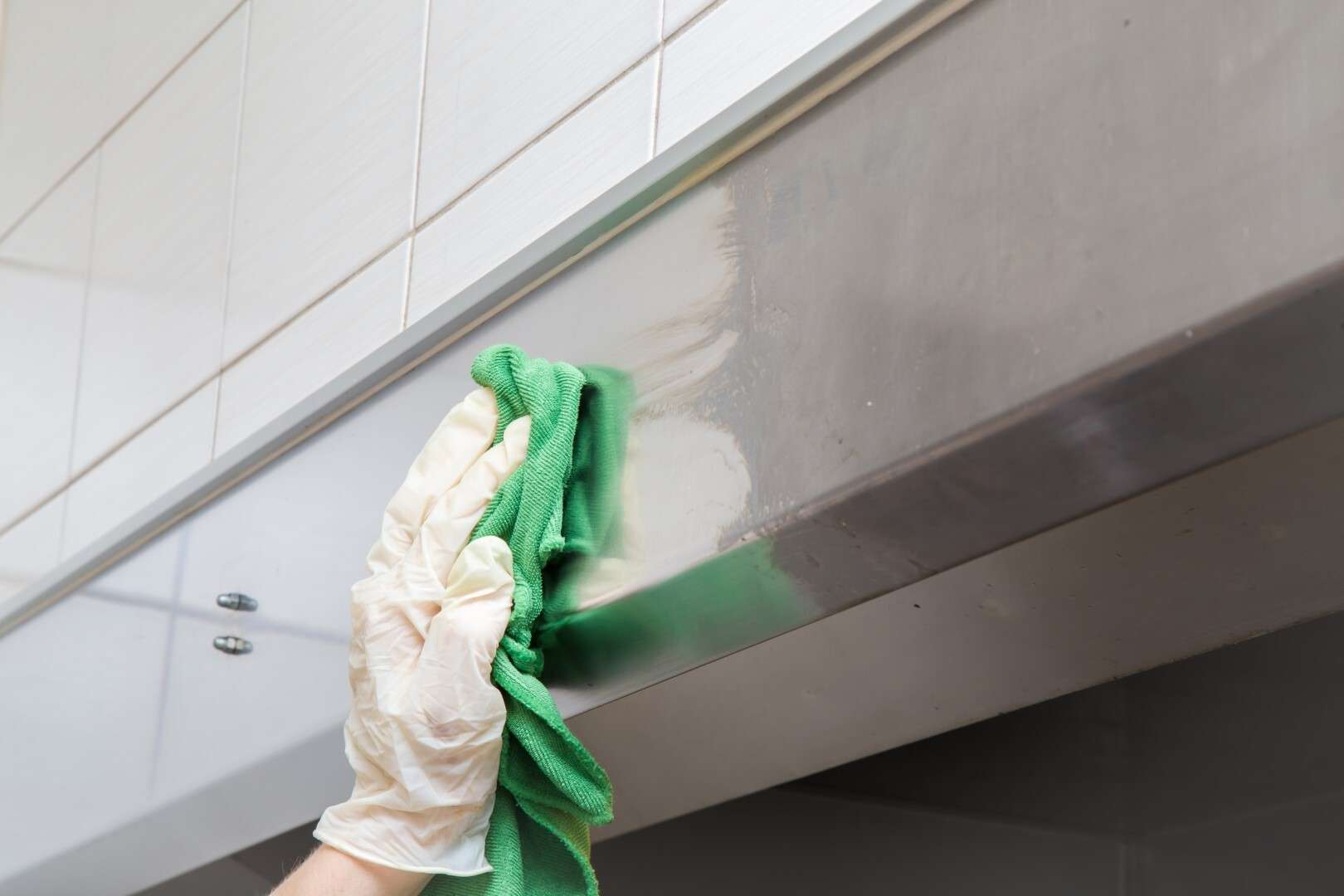Preparing Your Commercial Kitchen for a Deep Clean: A Complete Guide
Overseeing daily operations of a restaurant kitchen can often take up all of your time. However, regular restaurant cleaning is essential. In fact, a monthly or quarterly deep clean is often necessary. Below we will explore why a deep clean is necessary, how to prepare for it, and share valuable tips for maintaining cleanliness after the deep clean.
Why a Monthly or Quarterly Deep Clean is Necessary
Mitigating Fire Hazards
One of the primary reasons for a regular deep clean is to reduce possible fire hazards. Commercial kitchens, with their high-intensity cooking activities, often accumulate grease and flammable residues in various nooks and crannies. A deep clean targets these areas, reducing the risk of fire and ensuring a safer working environment.
Enhancing Food Safety
Maintaining impeccable food safety standards is non-negotiable in a commercial kitchen. A deep clean addresses hidden contaminants, prevents cross-contamination, and ensures that all surfaces, utensils, and equipment meet stringent hygiene requirements. This, in turn, safeguards the health and well-being of both staff and customers.
Optimizing Equipment Performance
Regular use of kitchen equipment can lead to the accumulation of grease, carbon, and debris. A deep clean not only enhances the longevity of equipment but also ensures optimal performance. From ovens and stovetops to fryers and refrigerators, each component is thoroughly cleaned and sanitized.
Compliance with Health Codes
Adherence to health codes and regulations is paramount in the foodservice industry. Regular deep cleaning helps maintain compliance, preventing potential fines and legal consequences. Health inspections are more likely to yield positive results when a kitchen consistently undergoes thorough cleaning.
Preparing for the Deep Clean
1. Create a Comprehensive Cleaning Checklist
Before diving into the deep clean, create a detailed checklist that outlines specific tasks and areas to be addressed. This ensures a systematic and thorough cleaning process, leaving no corner untouched.
2. Schedule Downtime
Coordinate with management to schedule a downtime for cleaning your restaurant. This ensures that the kitchen can operate smoothly before and after the cleaning process. Communicate the schedule to staff well in advance to minimize disruptions.
3. Notify Suppliers and Partners
If your kitchen relies on regular deliveries, notify suppliers and partners about the deep clean schedule. Adjust delivery times accordingly to accommodate the cleaning process without causing interruptions to the supply chain.
4. Delegate Responsibilities
Assign specific cleaning tasks to members of your kitchen staff. Ensure that responsibilities are distributed evenly, and each team member is aware of their role in the deep cleaning process. This promotes a collaborative effort and ensures efficiency.
5. Secure Necessary Cleaning Supplies
Gather all the necessary restaurant cleaning supplies, including degreasers, sanitizers, brushes, and cleaning cloths. Having everything on hand beforehand streamlines the cleaning process and prevents delays.
6. Inspect and Service Equipment
Before the deep clean, conduct a thorough inspection of all kitchen equipment. Identify any issues that require maintenance or repairs. Addressing these issues proactively ensures that equipment functions optimally after the cleaning process.
7. Protect Sensitive Equipment
For equipment that is sensitive to moisture or cleaning agents, take precautions to protect them during the deep clean. Cover or seal electronic components and other vulnerable areas to prevent damage.
8. Consider Professional Cleaning Services
For a truly comprehensive deep clean, consider hiring a professional cleaning service, like Safe Kitchens. Our experienced professionals have the expertise, tools, and techniques to address even the most challenging cleaning tasks, ensuring a thorough and efficient process.
Tips for Maintaining Cleanliness After the Deep Clean
Implement Daily Cleaning Protocols
Develop and implement daily cleaning protocols for your kitchen staff. Assign specific tasks to be completed at the end of each shift, focusing on high-traffic areas, surfaces, and equipment. Consistent daily cleaning prevents the accumulation of dirt and grime.
Schedule Regular Inspections
Establish a routine for regular inspections to ensure that cleanliness standards are maintained. Conduct surprise inspections to keep staff accountable and address any issues promptly. Consistent oversight reinforces the importance of cleanliness in the kitchen.
Provide Ongoing Training
Offer ongoing training to kitchen staff on proper cleaning techniques and the importance of maintaining a clean workspace. Reinforce the connection between cleanliness, food safety, and overall kitchen efficiency.
Invest in Quality Cleaning Tools
Equip your kitchen with high-quality cleaning tools, including commercial-grade brushes, scrubbers, and cleaning solutions. Investing in the right tools enhances the effectiveness of daily cleaning routines and contributes to a cleaner environment.
Regularly Clean Hard-to-Reach Areas
Pay special attention to hard-to-reach areas that are often overlooked. This includes the spaces behind and underneath equipment, corners, and areas with limited visibility. Regularly cleaning these spaces prevents the accumulation of hidden dirt and debris.
Document and Analyze Cleaning Data
Implement a system for documenting cleaning activities and analyzing the data. This helps identify trends, areas that may require additional attention, and the overall effectiveness of your cleaning protocols. Data-driven insights contribute to continuous improvement.
Book a Deep Cleaning for Your Commercial Kitchen
Preparing your commercial kitchen for a deep clean is a necessary undertaking that contributes to the long-term success of your business. By understanding the reasons behind a monthly or quarterly deep clean, meticulously preparing for the process, and implementing effective strategies for maintaining cleanliness afterward, you lay the foundation for a kitchen that not only meets but exceeds hygiene standards.
Contact Safe Kitchens to schedule your next restaurant deep clean. In the meantime, we hope you find the restaurant cleaning checklist below to be helpful.
Pre-deep clean checklist:
Back of House – Kitchen
Clear Items off or from any of the following equipment:
- Any Hotline Equipment
- Walk-ins (as needed and/or if they can be)
- Reach-in Coolers and Freezers (as needed and/or if they can be, bottom shelf preferred)
- Anything on the floor that can be damaged by water
- Move items away from the wall that needs to be cleaned (we will move anything with wheels)
- Any shelving, racks, or dry storage (as needed and/or if they can be)
- Hanging pots and pans
- Drain oil from fryers
Front of House
Clear Items off or from any of the following equipment:
- Reach-in Coolers and Freezers (as needed and/or if they can be, bottom shelf preferred)
- Anything on the floor that can be damaged by water
- Any shelving, racks, or dry storage (as needed and/or if they can be)
- Grab & go cooler
- Equipment on counters
Bar
Clear Items off or from any of the following equipment:
- Reach-in Coolers and Freezers (as needed and/or if they can be, bottom shelf preferred)
- Anything on the floor that can be damaged by water
- Any shelving, racks, or dry storage (as needed and/or if they can be)
- Wells
- Countertop reach-ins
- Alcohol from shelves
- Glasses
Please Schedule a time for:
- Initial walkthrough of the kitchen when we start to discuss items on the SOW
- Final walkthrough of the kitchen when we are finishing up to confirm SOW was completed

